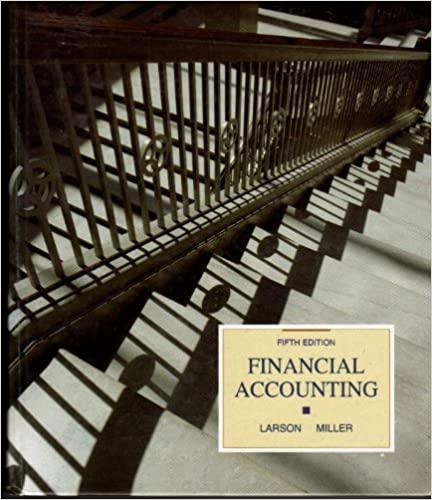Answered step by step
Verified Expert Solution
Question
1 Approved Answer
Question based on modified problems 4 . 3 from the reference text [ Flynn ( 2 0 0 9 ) ] from page 1 3
Question based on modified problems from the reference text Flynn from page of the textbook:
Fill a balance sheet for the company at the end of two years of operation Assume daysmonth:
a The company has gross sales of $ million per year and the pattern of sales is even, ie there is no cyclical pattern to sales.
b Customers are large firms with a typical payment pattern of every days.
c COGS covers material only and takes ; labour costs are in SG&A;
d Monthly payroll is $ paid biweekly; when issuing this balance sheet, it was right before the biweekly payment.
e There are enough raw materials on hand to support one month of manufacturing; two months of actual production of finished goods are in the warehouse.
f The company pays its suppliers days after goods are received.
g The owners started the business with an initial capital injection of $ million months ago.
h The owners borrowed $ million of longterm debt with the principal repayment in equal annual payments assume the principal repayment on debt has been made for year
i The company purchased $ million assets with a straightline depreciation period of years.
j In the first two years of the business, the company had a cumulative net income of $ and paid dividends of $ $ per year to the owners.
k The company has a shortterm credit line that runs positive or negative based on the fluctuations of the business.
Notes:
Use the information provided in the problem statement to assign the quantities for the various accounts in the balance sheet below.
Calculate the required quantities to indicate the correct amount on each of blanks in the balance sheet for those accounts.
Express your quantities in your answer in thousands $
If needed, round your answer to decimal places.
Answer the questions regarding the hypothetical scenario presented after the balance sheet.
Balance Sheet $
Assets
Current Assets:
Cash
Receivables
Short Term Investments
Inventory
Prepaid Expenses
Sum of the Current Assets
Fixed Assets:
Land, Bld&Equip.@Cost
Less Accumulated Depreciation
Total Fixed Assets
Long Term Investments
Goodwill
Total Assets
Working Capital
Working Capital Ratio
Liabilities
Current Liabilities:
ShortTerm Credit Line
Accounts Payable
Accrued Expenses
Taxes Payable
Current Portion Long
Term Debt
Sum of the Current
Liability
LongTerm Liabilities:
Repayable Grants
LongTerm Debt
Shareholders Equity:
Capital Shares
Retained Earnings
Total Liability and
Equity
If the cumulative dividend over two years had been $ instead of $if all the profits had been taken out of the business as dividends
A shortterm lender would be more with this situation.
Would working capital still be positive?
If you cut the inventory in half by a vigorous program of "just in time" manufacturing and shipping,
by how much would your shortterm debt drop? $ million keep one decimal place in your answer
Would the working capital change?

Step by Step Solution
There are 3 Steps involved in it
Step: 1

Get Instant Access to Expert-Tailored Solutions
See step-by-step solutions with expert insights and AI powered tools for academic success
Step: 2

Step: 3

Ace Your Homework with AI
Get the answers you need in no time with our AI-driven, step-by-step assistance
Get Started


